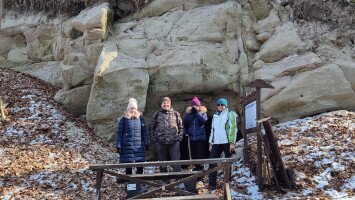
Bükkábrányi lignitbánya
Kérjük görgess
Bükkábrány lignite mine,Petrified forest
In the Pannonian Era of the Miocene, ca. 8-5 million years ago the Bükkalja Lignite Formation was formed. In the northern sea basin separated from the ancient Tethys.
On the flat surface, huge swamp areas were formed. Lignite was formed as a result of the destruction of subtropical swamp vegetation (swamp cypress, mammoth pines, deciduous trees such as alder, willow) and the accumulation of heavy salt and reed. Lignites represent the initial phase of carbonization, with well-recognizable plant structures.
In Bükkábrány, mining has uncovered the remains of trees and a petrified forest. After removal of the sand covering the lignite, the original mammoth pines and swamp cypresses were exposed. Their contemporary height could reach about 30-40 meter.. A sudden sandstorm or sludge blast could lead to their death. It covered it at a height of about 6 meters, preserving the lower part of the swamp cypress. After that, the parts above the sand or mud layer were destroyed.
Sixteen tree trunks, 5-6 meters high, 1.5-3 meters in diameter, have been preserved in their original upright position, but unlike similar finds, they have not been charred or fossilized. The trees of their 300-400 years have survived with its roots, some branches and roots as organic matter, this find is considered a world famous sensation. The tree trunks, which began to dehydrate rapidly in the air, were exhibited after conservation at the Herman Otto Museum in Miskolc and the Ipolytarnóc Fossil Remains Nature Reserve.












